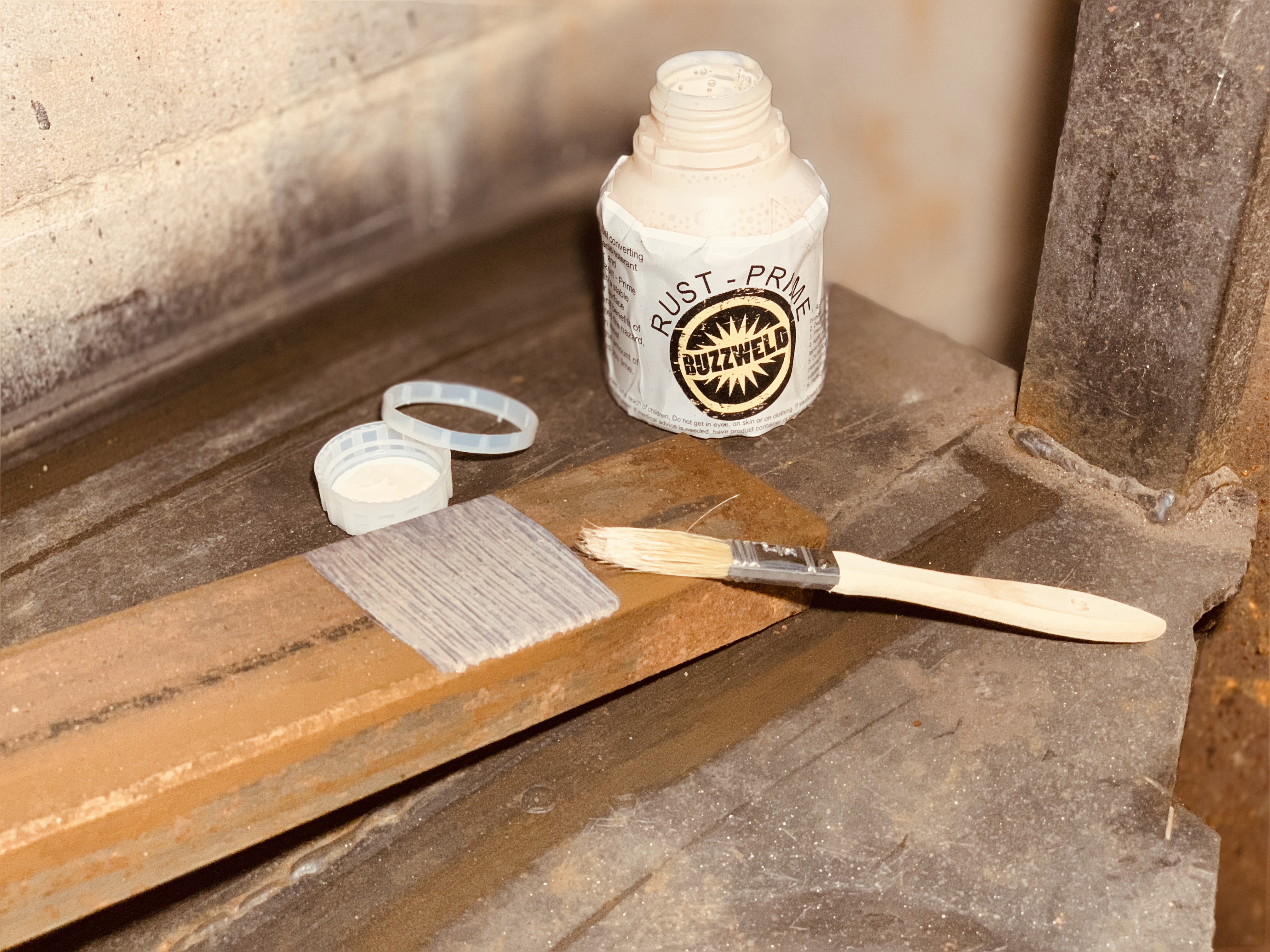Rust Converter
What is the best way to deal with rust?
There are many types of rust, and their causes. We will cover typical steel corrosion and the different approaches you can take.
The main ways of Dealing with rust are:-
Typically a body shop will remove rust. If you remove rust you remove the problems of painting on rust. You are not removing the cause of the corrosion however. Its a common misconception that rust creates rust. Substrate metals in this case steel "creates" the rust. Whilst it is preferable to be painting something "rust free" corrosion returning "rust coming through" or generally causing defects is never far away. You can remove rust mechanically by sanding. filing, blasting (such as sand or soda blasting). There are many tools available from mini DA sanders, and rotary angle sanders, to drills and angle grinders each useful for different scenarios. The list of types of abrasives that interface with the surface to remove the rust also vary equally. From your Blaze rapid strip, to your cheap low grit sanding pads, scotch type abrasives, and wire wheels, and sand blasting guns, and services. Needle gunning is included here, although it is a partial method, and only removes the heavier rust.
Pro's
- Various types available to suit different budgets
- Flexible to reach many areas
- Gives you an "honest" surface from which to work from
Con's
- Thins the metal, reducing its structural integrity.
- A large variety of means may be necessary to clean one item
- Can be slow and time consuming
- Often needs preparation work prior to treatment.
Chemically remove rust
This method using various types of solutions involving a fluid substance to remove the physical rust. This can range from having a body of a vehicle dipped to small bottled solutions sprayed on. Interestingly this method has many "home brew" methods. including soaking an item in Household Vinegar, Lemon and Lime juice or hydrochloric acid. The biggest issues with the acid based removers is they often continue working after you have "finished" with them, which is a common cause of paint issues and rust returning later.
Pro's
- Can be very cheap, using only household products
Cons
- Can be very slow, partially effective, and also cause other side effects such as paint failure later on from contamination.
- Phosphoric acid converts rust to ferric phosphate, a black substance.
Chemically Convert Rust
The second most popular method, dominated by fast acting "make it black" solutions. Products here include converters that may not do a full conversion depending on chemistry such as Rust-Prime, Jenolite, Vactan, FE2o3, Kurust, RC600 and more. Rust-Prime for example uses a fact acting acrylic co-polymer, that includes tanin. Products like this are usually Creamy coloured, water based, and when applied change from cream, to blue, and then finally black once dry. They can then be over coated with a primer to seal the solution, and provide protection. The stabilisation isn't a full conversion. For example Magnetite Fe3o4 is the lowest reacting form that you can stabilise rust FE2o3 to. Rust Encapsulator chemically converts the rust through this whole process which takes 9 months underneath the coating. The coating does not need to be removed after and uses the existing rust to form a protective barrier. It does also not need to be top coated short term to provide full protection to the metal. A product like Rust-Prime would be the best budget rust converter, but a better (and more expensive) option would be to use Rust Encapsulator for a full conversion and protection at the same time.

Pro's
- Several different products available that work in similar ways to easily deal with rust
Cons'
- All these methods do need the rust to be prepared prior to treatment, and the level at which they actually isolate and deal with the rust vary.
Other products that do a full chemical conversion on rust.
- 2K Epoxy Armour- needs a coarse key, solvent free, very thick
- CIO Chassis In One- Needs good prep, and use plenty of product
Alternative products
Hi, I have a 1976 Triumph Spitfire, lots of rust. I used WAR on a wheel arch, having removed anything loose and degreased. Went on well, very happy with it.
1st Question - Can I cover it with the green enamel paint I have for the outer body or do I need to apply a primer over the WAR first.
2nd question - the inner rear wings need covering with something as they have a mixture or rust, original paint, and dirt. I can remove most of the dirt through spraying degreaser thgrough the access holes and then wash off with spraying water but I cant get my hand it to get any purchase to give the surface a thorough clean. I know you say you have to degrease before applying WAR but will it stick to a surface which has been spray degreased but not thoroughly cleaned. Is one of your other products more suitable in this situation?
Hello, I am in the process of restoring a classic BMW car. If by chance you have any rust proofing product samples please be so kind as to post them to me